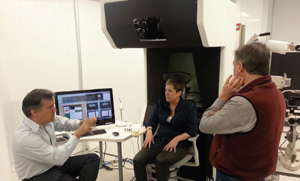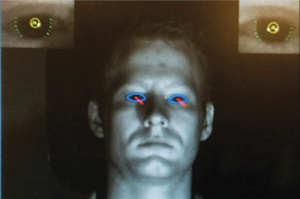| |
 |
| |
Dr. Anne-Marie Lahr of Hoya Vision Care tries out a prototype of DVS’s
VisionOptimizer at the Georgia Tech Research Institute in Atlanta. With
her are Jose Garcia, head of the DVS’s engineering team (l) and company
CEO Keith Thompson. |
| |
 |
| |
The VisionOptimizer can demonstrate photochromic, polarized and
anti-reflective lenses, as well as progressive lenses and other designs.
|
| |
 |
| |
An eye tracking technology is used to determine the patient’s head position in 3D space and their position of gaze. |